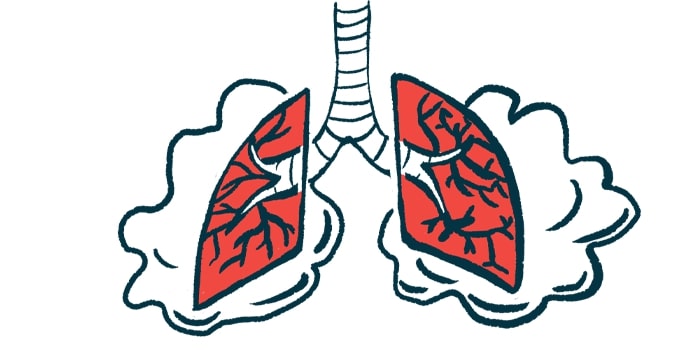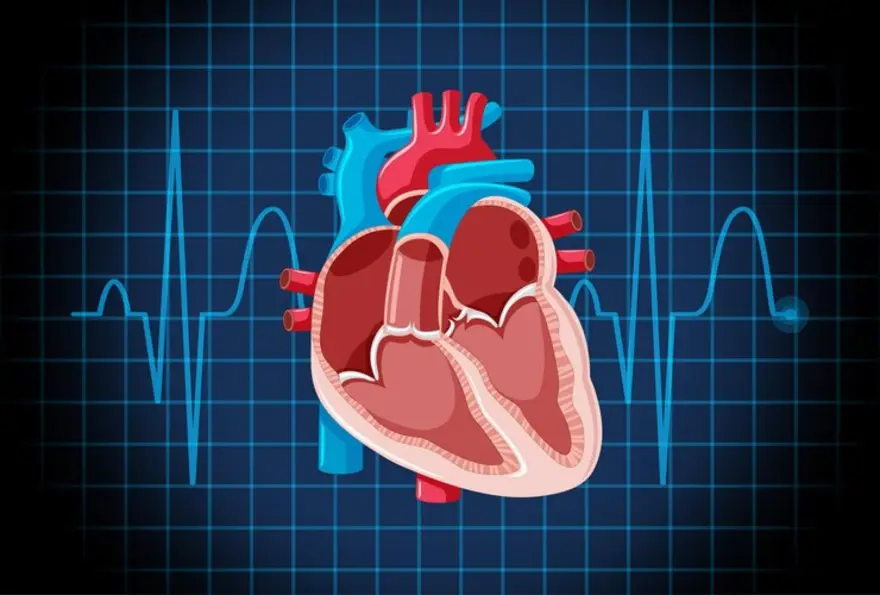Preventive Healthcare
Restrictive Lung Disease - Types, Symptoms, Causes & Treatments
16113 Views
0

What is Restrictive Lung Disease?
Restrictive lung disease is a category of lung disorders that make it difficult for air to move in and out of the lungs. This can lead to shortness of breath, difficulty breathing and other respiratory symptoms. There are many different types of restrictive lung disease, and they can be caused by a variety of factors, including infections, environmental factors and underlying medical conditions. Treatment for restrictive lung disease typically focuses on relieving symptoms and improving quality of life.
Restrictive lung disease is recognised and classified by the International Classification of Diseases (ICD-10) under other respiratory system diseases (code: J98.4).
Types of Restrictive Lung Disease
There are four main types of restrictive lung disease: interstitial lung disease, pulmonary fibrosis, sarcoidosis and lymphangioleiomyomatosis.
Interstitial Lung Disease
Interstitial lung disease is a group of disorders that affect the interstitial tissue of the lungs. This tissue is found between the alveoli (air sacs) and is responsible for exchanging oxygen and carbon dioxide between the blood and the air.
Interstitial lung disease can be caused by viral infections, environmental factors and certain medications. Symptoms of this disease include shortness of breath, coughing and fatigue. Treatment options include corticosteroids, immunosuppressants and oxygen therapy.
Pulmonary Fibrosis
Pulmonary fibrosis is a condition in which the lung tissue becomes thickened and scarred. This scarring makes it difficult for oxygen to pass from the lungs into the bloodstream.
Pulmonary fibrosis can be caused by viral infections, environmental factors and certain medications. Its symptoms include shortness of breath, coughing, fatigue and weight loss. Treatment options include corticosteroids, immunosuppressants and oxygen therapy.
Sarcoidosis
Sarcoidosis is a condition in which granulomas (clusters of inflammatory cells) form in various organs of the body. The lungs are most often affected by sarcoidosis, but granulomas can also form in the lymph nodes, eyes, skin and liver.
Sarcoidosis can be caused by viral infections, environmental factors and certain medications. Symptoms of sarcoidosis include shortness of breath, coughing, fatigue and weight loss. Treatment options include corticosteroids, immunosuppressants and oxygen therapy.
Lymphangioleiomyomatosis
Lymphangioleiomyomatosis is a condition in which smooth muscle cells grow uncontrollably in the lungs and lymphatic system. This growth can obstruct the lymphatic vessels and airways, leading to shortness of breath, coughing and difficulty breathing.
Lymphangioleiomyomatosis can be caused by viral infections, environmental factors and certain medications. Its symptoms include shortness of breath, coughing, difficulty breathing and weight loss. Treatment options include corticosteroids, immunosuppressants and surgery.
Difference between Obstructive and Restrictive Lung Disease
In Obstructive Lung Disease, the air exhaled from your lungs becomes abnormally slow and inefficient. The lung volume increases in this condition, which makes it difficult for the alveoli to deflate and release the air completely. It occurs due to narrow airways, vastly decreasing the exhalation rate.
Broad types of Obstructive Lung Disease include:
- Chronic Obstructive Pulmonary Disease (COPD) is characterised by inflammation in the lungs, blocking airflow
- Bronchiectasis is the irregular widening of the bronchi or their branches
- Cystic fibrosis is the filling of the lung with mucus
- Asthma is the narrowed and swollen airways leading to obstructive breathing
- Bronchiolitis is a viral condition
In Restrictive Lung Disease, it becomes difficult to breathe in the optimum amount of air. The lung volume decreases significantly, which makes it difficult for the alveoli to extend completely. These are classified based on the area affected in or around your lungs.
You may experience any of the four broad kinds of restrictive lung diseases:
- Pulmonary Restrictive Lung Disease is associated with the wellness and functioning of your lungs.
- Abdominal Restrictive Lung Disease is associated with the organs and tissues that make up your abdominal area, involving the diaphragm, the stomach, the liver, the blood vessels, etc.
- Neurological/Neuromuscular Restrictive Lung Disease is associated with neural processes and their effects on the movement of muscles.
- Thoracic Skeletal Restrictive Lung Disease is associated with the ribcage, breast, and other bony structures.
Symptoms of Restrictive Lung Disease
Restrictive lung disease has a few distinctive signs. If you are suffering from the disease, you may experience a variety of the following symptoms:
- Shortness of breath: Difficulty breathing or a feeling of suffocation
- Wheezing: A high-pitched noise produced during breathing
- Coughing: Constant clearing of the throat
- Chest pain: Tightness, fullness, or pressure in your chest
- Fatigue: Extreme tiredness and exhaustion without exertion
- Depression: Co-occurring, may or may not be present
- Anxiety: Co-occurring, may or may not be present
Causes of Restrictive Lung Disease
There are two types of Restrictive Lung Disease. These are categorized based on the area they affect: intrinsic (inside your lungs) or extrinsic (outside your lungs).
- Intrinsic Restrictive Lung Disease is associated with the internal structure and functioning of your lungs. It results from scarring and inflammation of your lung tissues, including the alveoli, capillaries, and interstitium. Abnormal growth of cells causing rash, connective tissue diseases, and exposure to drugs and toxins are other causes that lead to the development of intrinsic restrictive lung diseases.
- Extrinsic Restrictive Lung Disease is associated with the chest wall, pleura, respiratory muscles, and neuromuscular disorders. Dysfunction in these areas accounts for lung restraint and respiratory failure. Other health conditions such as a twisted spine, intermittent muscle weakness, fractures to the rib cage, fluid buildup between the layers of tissue surrounding the lungs, obesity, diaphragm paralysis, and hunching of the upper back lead to the development of extrinsic restrictive lung disease.
Diagnosis of Restrictive Lung Disease
- Pulmonary Function Tests: A non-invasive technique to measure lung volumes, capacity, rates of exchange, and gas flow in the lungs. Spirometry in restrictive lung disease is one of the most commonly used techniques to assess your pulmonary function.
- Chest X-rays, CT Scans, or High-Resolution Computed Tomography (HRCT): Production of high-resolution lung images for detecting abnormalities in the structure of the lungs and the surrounding tissues and organs.
- Pulse Oximetry: Used to measure blood oxygen levels, indicating your lungs' efficiency.
- Bronchoscopy: A flexible tube with a camera and tools on its tip to look inside the airways and is used to take samples from the lung tissue for further evaluation.
Treatment for Restrictive Lung Disease
The treatment for Restrictive Lung Disease depends on its type, symptoms, and severity. You need to visit an authorised practitioner and chart a treatment plan that suits you. Some of the most widely used treatments include:
- Inhalers, shots of corticosteroids, help control lung inflammation by relaxing your pathways.
- Immunosuppressants prevent your body from attacking its cells in cases of autoimmune connective tissue disorders.
- Antibiotics treat certain lung infections by reducing the mucus buildup in your lungs.
- Expectorants help clear out foreign dust particles and irritants from your air pathways.
- Oxygen therapy includes a tube attached to an oxygen tank worn to replenish the scarcity of oxygen in your body.
- Pulmonary rehabilitation is a program designed for outpatients. You learn about your condition, situational safety measures, nutrition, breathing exercises, nutrition, and the resultant mental state of your disease.
- Chemotherapy is used to kill the affected cells that block your air passageway.
- A lung transplant involves replacing your affected lung with a healthier lung so you lead a healthy life.
- Lifestyle changes include upper and lower limb strengthening and conditioning exercises, respiratory muscle strengthening exercises, level walking, relaxation or visualised meditation and quitting smoking.
Conclusion
Restrictive Lung Disease is usually a chronic condition. You will require lifetime support from your doctors and primary caregivers. Treating and managing Restrictive Lung Diseases are challenging as it often leads to other health conditions. Seeking timely and informed treatment is the best way to work and live with this condition. Keeping a tab on the changes in your state and tailoring the treatment plan according to your needs will lead to the best possible results in managing your disease. Book your Lungs Test with Metropolis.
 Home Visit
Home Visit Upload
Upload














1701259759.webp)









 WhatsApp
WhatsApp